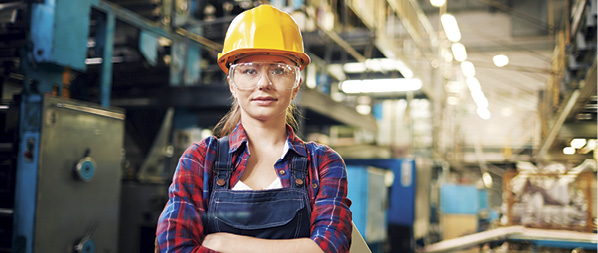A New Era of Automation

By Aurelio Banda, Group Vice President of Automation, Motion
Today, automation and manufacturing are synonymous with transforming an industrial company. The demand for automation technology is growing as companies across industries look for ways to streamline and speed production and manufacturing. The trends of high-cost labor, low cost of capital, workforce skills gap, reshoring manufacturing footprint, and pandemic-proofing operations lead the way for automation justification to transform factory floors. Furthermore, a new automation era is upon us with rapid advances in robotics, artificial intelligence, data analytics, IIoT, and machine learning. This technology enables machines to match or outperform human capital in a range of workplace activities, including repetitive and cognitive tasks.
The acceptance for automation and the change in manufacturing fall across an arch of present needs with future outcomes in mind for industry executives. Companies range from just getting started to already embracing automation; a growing number foresee the implications of this new automation age on their ongoing business model. Several factors to consider in connecting the present to future states of automation are:
- The present state: What automation is making possible with current technology.
- The transforming state: What is likely to be made possible as technology evolves.
- The future state: What to consider (besides technical feasibility) when evaluating automation – where and how much to automate to best capture value over the long term.
A leading direction in the new automation era brings both engineering and IT disciplines to set the pace for future automation and technology. For example, with the rise of automation and robotics acceptance in their sites, many manufacturers will be operating high-speed and high-volume production applications. Most advanced systems will run adjustments without interruption, switching between product types with no need to stop the line to change programs or reconfigure tooling – a function of both engineering and IT disciplines. This integration convergence is realized through communication between machines and robots – the engineering discipline – on the factory floor, calling on the IT discipline to supervise the modern networking technologies.
The manufacturing future is to leverage technology, balancing the overall operating strategy with business goals. Selecting the right level of technology implementation for future needs requires a thorough understanding of the organization’s processes and manufacturing systems. For instance, every project with automation considerations must be assessed for the right level of technology. The improvements it can offer directly link to the organization’s overall strategy: digital transformation. The next five years will see an increase in technology accessibility because of automation platforms and networking connectivity availability, driving companies to make their digital transformation plans ready to implement.
As we partner with companies to streamline processes, increase production, and improve manufacturing efficiencies, we create significant opportunities to leverage automation technology for these outcomes. The digital transformation from present to future states in manufacturing environments will be best served by working with partners who can assist with scaling automation solutions while reducing complexity with ease-of-use software and scalable hardware. Our proven approach is to partner closely with our customers and suppliers on automation applications and product developments. Motion’s principles to engineer product designs, develop proofs of concept, and deploy automation builds are keys to the successful digital transformation of manufacturing environments.







